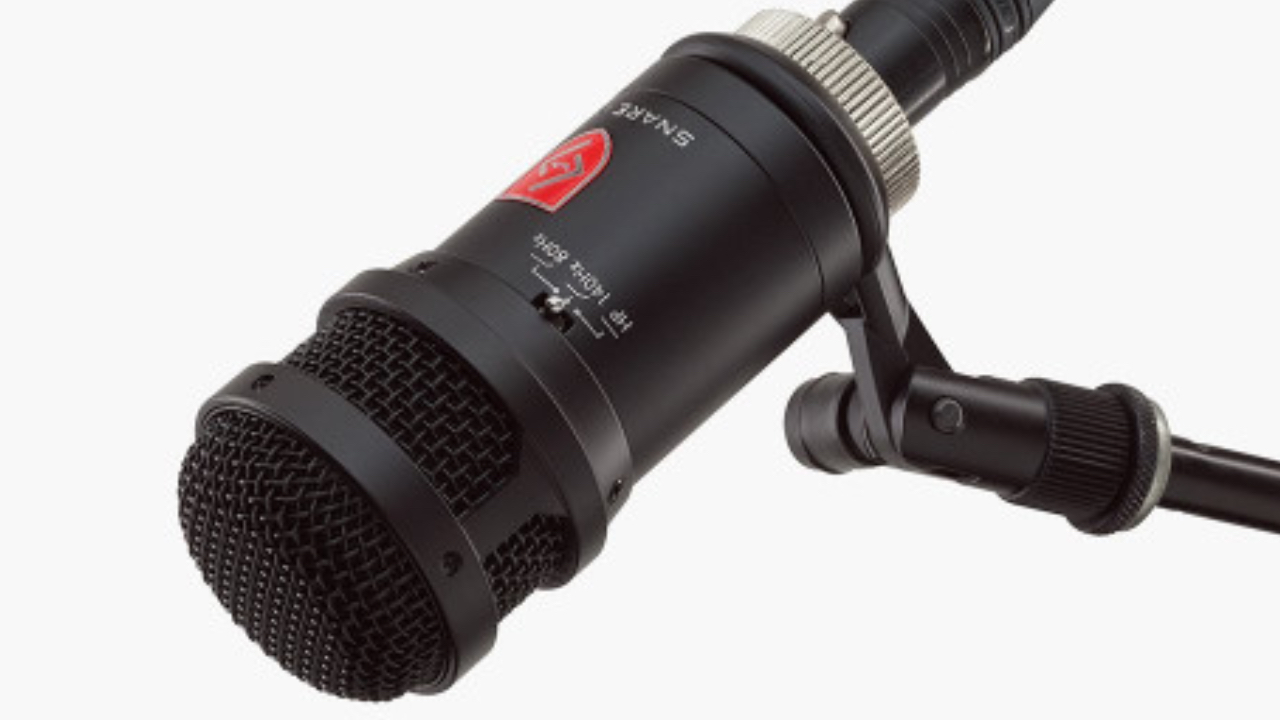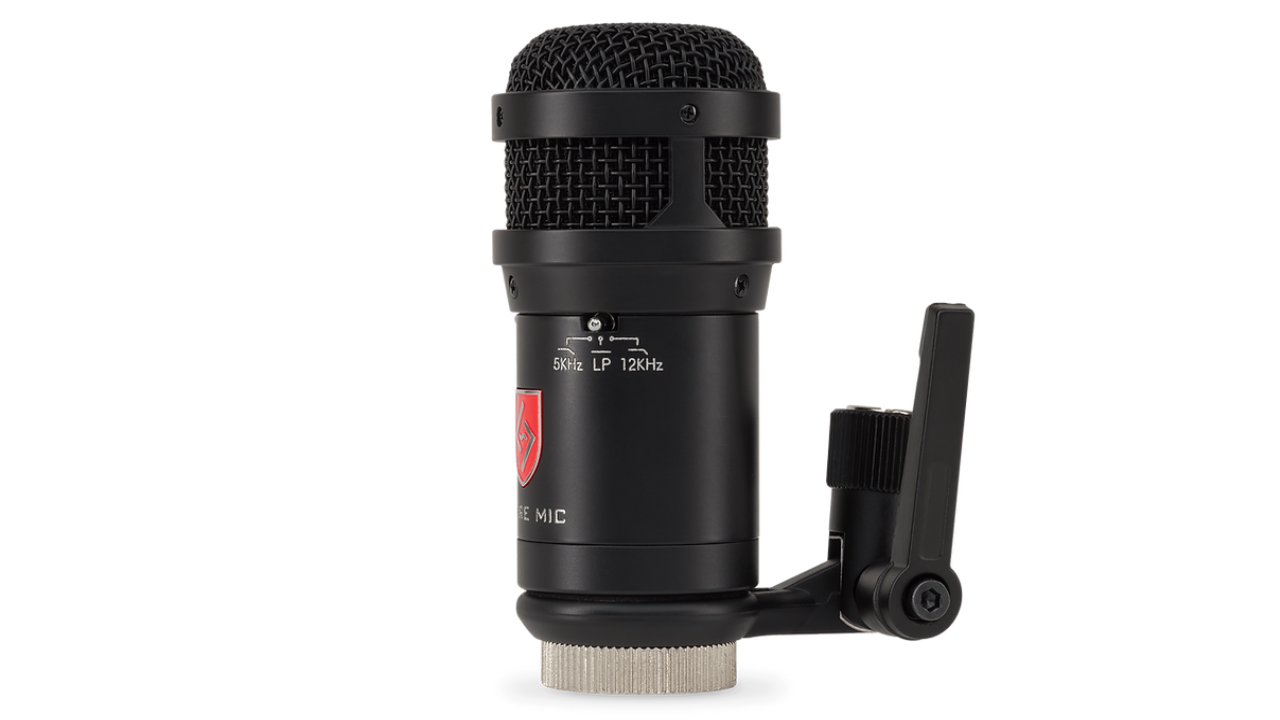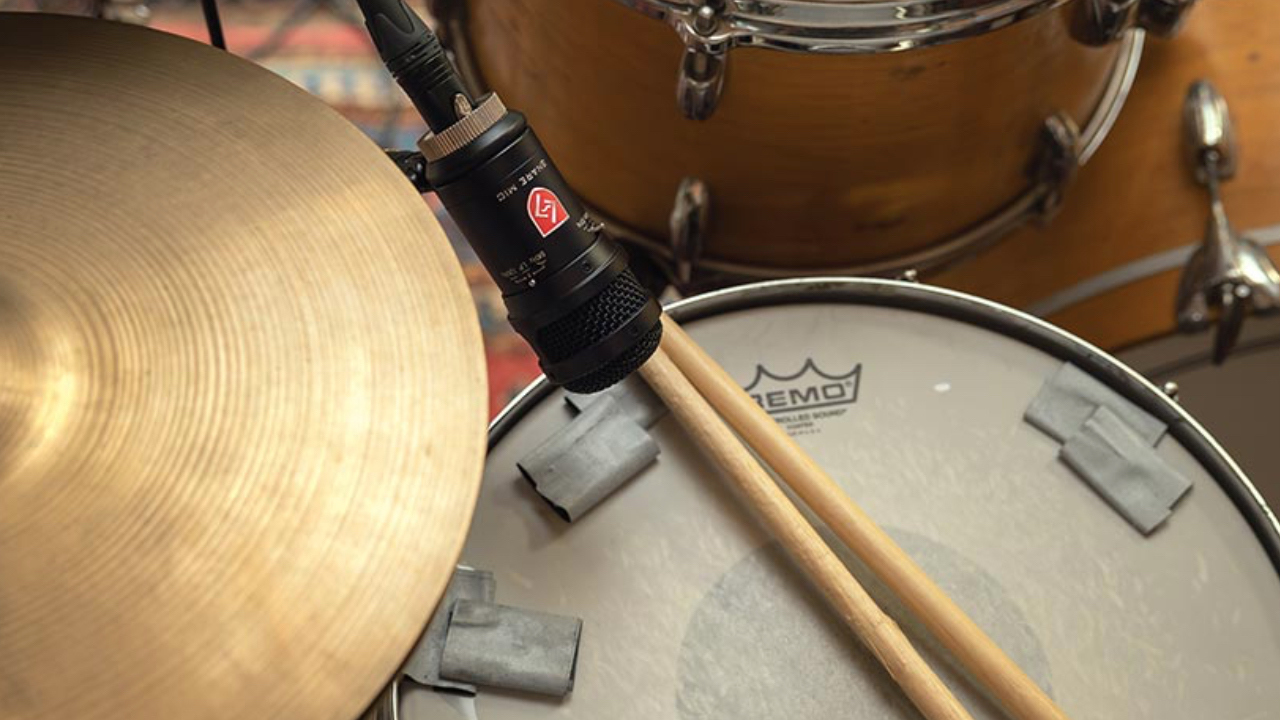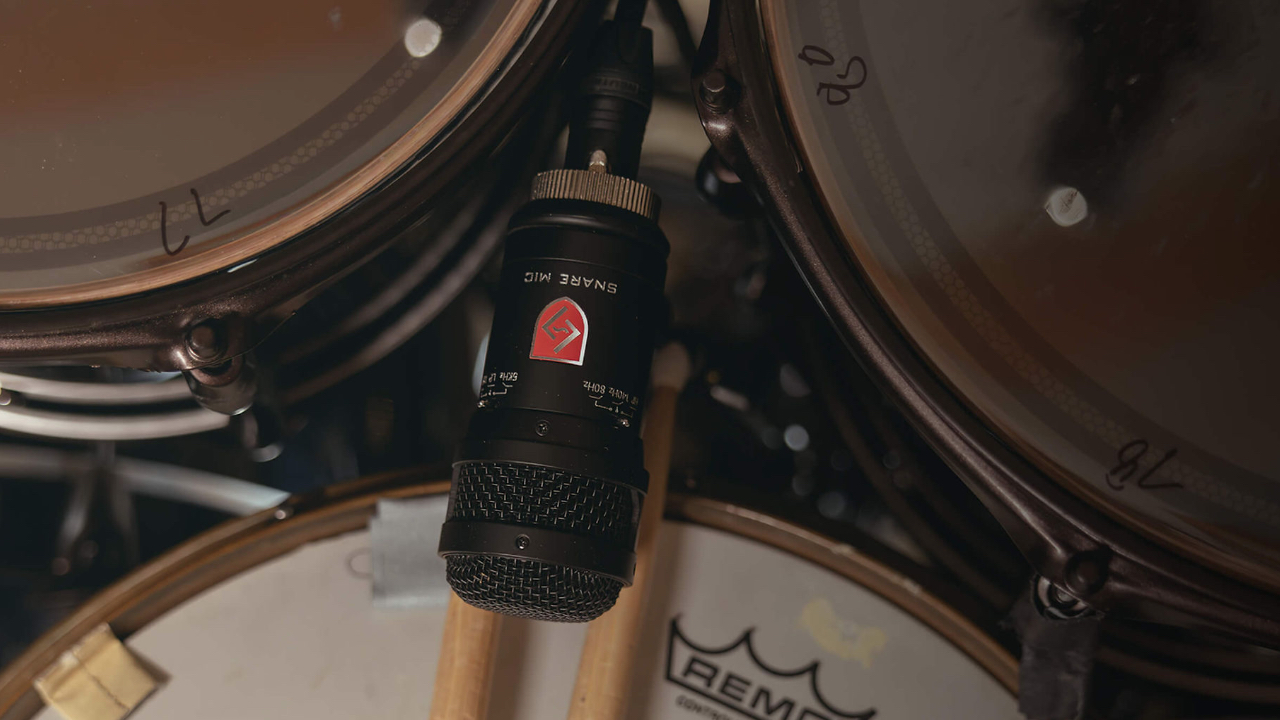MusicRadar Verdict
The Snare Mic from Lauten Audio is a great solution for recording and live use. Thanks to the filtering options, it can be a detailed condenser mic, emulate a classic dynamic microphone sound, reduce unwanted bleed and just about remove the need for a second mic under your snare. Yes, it costs more than everyone's go-to instrument microphone, but it's packing plenty of features to justify it too.
Pros
- +
A purpose-made snare mic for recording/live applications
- +
Convenient size and excellent build quality
- +
Comprehensive voicing options
Cons
- -
The switching combos will take you a while to remember
- -
It's pricey compared to its main competitor
MusicRadar's got your back
Lauten Audio Snare Mic review: What is it?
When the time comes to amplify or record your snare drum, you’re likely going to start looking for a suitable drum microphone. You’ll need a mic that’s capable of handling the high SPLs (sound pressure levels) that are the snare’s stock-in-trade; it’ll need to be rugged enough to do battle on busy stages while dodging erratic stick hits, and above all, you’ll want it to capture your snare drum in its best light.
For decades, that search has been a short one, starting and ending almost immediately with Shure’s SM57. This rugged workhorse has, for all eternity, been around £100/$100, and when it isn’t being tirelessly punished a couple of inches from your snare head, it can be employed by your bandmates on their amps and vocals.
So, as the old saying goes, if it ain’t broke, don’t fix it. But Lauten Audio is tearing up The Little Book of Big Cliches by focusing on a dedicated mic, designed specifically for snare drums. In a market dominated by forgettable model names, Lauten has opted to simply call it Snare Mic. Let’s see if it can turn our heads from everyone’s go-to microphone.
First, we should clarify that the application is where the similarities between the Lauten Audio Snare Mic and Shure’s omnipresent instrument mic end. For a start, Snare Mic is a F.E.T.- driven condenser microphone with a 32mm capsule, 20Hz-20,000Hz frequency response, and the ability to withstand SPLs of up to 135dB. For reference, that means you could mic-up a jet engine before it will destroy the mic (spoiler: we didn’t test this claim).
Now, there are countless F.E.T. condenser mics out there, all boasting a similar ‘better than our hearing’ frequency response, and hardy, high-SPL tolerances, so why not just use one of them?
Well, in addition to the spec sheet, the Snare Mic is equipped with some clever filter-switching optimised for snare drums. This, combined with the form factor, end-fire design and a claim of bleed-busting off-axis rejection of 28dB are what set the Snare Mic apart from your common-or-garden, all-purpose large-diaphragm condenser mic.
Lauten Audio Snare Mic review: Performance & verdict

The Snare Mic comes nicely packaged inside its own Cordua carry case, and the first thing you’ll notice is that it’s a chunky little brute, weighing in at just over 400 grams. It comes with its own integrated holder, which attaches the mic to your stand, but also includes its own angle adjustment.
This is made via a sturdy paddle that’s ideal for making fine adjustments from the playing position - no fiddly thumb bolts to worry about, and if you’ve locked your stand in place then you don’t need to risk creating the dreaded droop in order to make positional changes. You can, of course, attach the snare mic to a clip-on rim mount if floor space is a problem.
Lauten provides some handy info on positioning the Snare Mic with suggested angles for capturing more of your desired sound from your snare. Flatter angles (20-30 degrees) to pick up more crack and snap, medium (30-40 degrees) for additional body, and steeper (40-50 degrees) to maximise the body and low end of the drum. These are rules-of-thumb, and could be applied to other mics on the snare, but it’s great to see a mic brand take this ‘helping hand’ approach if you’ve never tried to capture your snare before. Similarly, there’s a reminder that the Snare mic requires phantom power in order to work - so remember to engage this if you’re met with silence!
Next up is the filtering we mentioned earlier. You’re probably used to seeing a fixed high-pass filter on condenser mics, which are often used to tame low end rumble on vocals, overheads and guitar tracks. Here though, we have a pair of multi-position toggles. One controls a low-pass filter and the other is for a high-pass. Each toggle can be set to one of three positions. For the high-pass there’s flat, 140Hz or 80Hz, and for the low-pass we get flat, 5KHz or 12KHz, so, excluding the ‘flat’ settings, the high-pass will filter out frequencies below the selection, and the low pass will filter out frequencies above its selected position.
That’s a useful feature in itself, but the real fun comes from combining the two filters, and it’s this that sits at the heart of what the Snare Mic is all about. With both filter switches in their ‘flat’ positions, we get the full frequency response of the mic. It’s full, and un-coloured, picking up plenty of detail.
With the low-pass set to 80Hz and the high-pass set to 12KHz, the Snare Mic emulates the sound of an EQ’d dynamic mic. We placed our SM57 next to the Snare Mic in this mode, and the results are quite uncanny. “But why would I want this to sound like a mic that costs three-times less?”. Well, it turns out that people quite like the sound of a dynamic mic on a snare drum, and this way you (or your engineer) have options without having to change or set up another microphone. Plus, if you intend to use the Snare Mic live, it will help tame potential bleed on stage, but there’s another way of doing that…

With the high-pass set to 140Hz, and the high-pass set to 5KHz, we’re in what Lauten calls ‘Bleed Decimator’ mode. The idea being that these settings, combined with the mic’s cardioid polar pattern will fight bleed from the rest of your kit. This is important for a couple of reasons - it enables more accurate processing, most notably when it comes to surgical EQing and heavy compressing, without nuisance cymbal bleed restricting what you want to do. But, the other benefit is that less bleed means less potential for phase issues, which is particularly prevalent with the number of microphones you’re likely to have set up on your kit, and can rob your drum sound of its low end if not kept in check.
This setting is one of our favourites, and while we were sceptical about the Snare mic’s ability to ‘decimate bleed’, it really does work. It’s not completely autonomous, you’ll still need to take a bit of care when placing the mic - placing its null point towards your hi-hat will help. But get it right, and you’ll definitely notice a good reduction in bleed from your cymbals and other kit parts in your snare mic.
The final setting is designed to optimise the mic for capturing the rattle of your snares. Lauten says that the Snare Mic’s ‘X-Ray sound’ can eliminate the need for a second microphone placed under your snare, which is another handy concept particularly if you’re low on channel-count.
We tried the Snare mic on a number of snares including a 14”x5” Ludwig Acrolite, a 14”x5” Tama Starclassic Maple, a Mapex Black Panther 12”x7” Cherry/Maple and a Premier 14”x6.5” brass-shelled drum. Each time the results were similar in each mode, and in particular, the Snare Mic captured the rattle of our Acrolite’s slightly loose snares very clearly without the need for an under-snare mic.

The Snare Mic is a refreshing product, in a world of repurposed and all-rounder mics that carry generic descriptions such as ‘instrument mic’, ‘small/large diaphragm condenser’, it’s great to see a mic aimed specifically at one of the most important sounds in our kits. But it’s more than just friendly naming and marketing bluster. The filtering is the jewel in the crown, and while at first you’ll likely be referring to the paperwork to remember which combination you want, it soon becomes simple, and we think you’ll find your preferred setting and keep it there most of the time.
Yes, you can buy multiple microphones, or even another snare drum for the price of the Snare Mic, but the same can be said for many microphones. If you’re serious about recording your drums, or want a bulletproof, dual-purpose studio/live mic, it’s well worth the investment.
Lauten Audio Snare Mic review: Hands-on demos
Barry Johns Studio Talk
Jake Reed
Sweetwater
Lauten Audio Snare Mic review: Specifications
- Type: F.E.T. condenser microphone
- Output: XLR (requiring +48v phantom power from pre-amp)
- Frequency response: 20 Hz - 20 kHz
- Signal to noise ratio: 69 dB
- Dimensions: 112x71mm (with mount attached)
- Weight: 407g (including mount)
- Contact: Lauten Audio

I'm a freelance member of the MusicRadar team, specialising in drum news, interviews and reviews. I formerly edited Rhythm and Total Guitar here in the UK and have been playing drums for more than 25 years (my arms are very tired). When I'm not working on the site, I can be found on my electronic kit at home, or gigging and depping in function bands and the odd original project.
“I’m surprised and saddened anyone would have an issue with my performance that night”: Zak Starkey explains why he got fired from The Who
“These tariff actions will have a long-term effect on musicians worldwide”: The CEO of NAMM urges Trump to dump tariffs on components of musical instruments
Brace yourself: Bryan Adams didn’t buy his first real six-string in a five and dime










